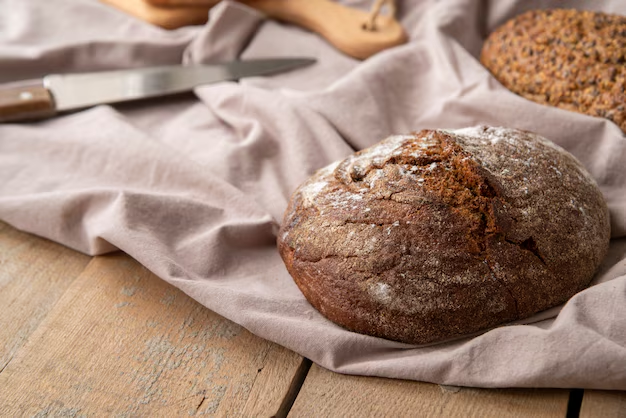The Ultimate Guide to Storing Sourdough Starter in Your Refrigerator
In the world of bread-making, the sourdough starter is like a precious pet that requires attention and care. Whether you're a seasoned baker or just starting, understanding how to properly store your sourdough starter can significantly impact your bread's flavor and texture. Let's dive into the nuances of storing your sourdough starter in the refrigerator, ensuring it remains healthy and ready for your baking endeavors.
🥖 Why Store Your Sourdough Starter in the Refrigerator?
If you're an enthusiast of sourdough bread, you know that maintaining a sourdough starter involves regular feedings. During fermentation, the natural yeast and bacteria in the starter produce carbon dioxide, which leavens the dough. However, feeding your starter every day can be time-consuming and might not fit into everyone's schedule, prompting the need for refrigeration.
Benefits of Refrigerating Your Sourdough Starter
- Reduced Feedings: Refrigeration slows down yeast activity, allowing you to feed your starter once a week rather than daily.
- Convenience: Ideal for those who bake less frequently or are temporarily pausing their baking.
- Longevity: When properly stored, a refrigerated starter can last for several weeks or even months with minimal attention.
🌡️ Preparing Your Sourdough Starter for Refrigeration
Before placing your beloved starter in the fridge, a few preparatory steps will help maintain its vitality.
Feed Your Starter
- Freshen It Up: Give your starter a feed a few hours before refrigeration. This will prime it for dormancy.
- Use Fresh Ingredients: Mix equal weights of flour and water to feed your starter. This keeps the natural balance of yeast and bacteria.
Safe Storage Practices
- Use a Clean Container: Opt for a jar or a plastic container with a loose lid. Sourdough starters need to breathe, so make sure not to seal them off completely.
- Leave Room for Expansion: Ensure there’s enough space for the starter to expand; about 25% of the container should be empty.
📆 Maintaining Your Starter in the Refrigerator
While refrigeration reduces the need for daily feedings, it's not a complete 'set and forget' matter.
Regular Feeding Schedule
- Weekly Feeding: Remove the starter from the fridge once a week and allow it to come to room temperature. Discard half the starter, then feed with equal parts flour and water. Allow it to sit at room temperature for a few hours before returning it to the fridge.
Checking for Health
- Monitor Growth: After each feeding, check to see if your starter bubbles or doubles in size. This is a sign of a healthy, active starter.
- Watch for Odors: A tangy, yeasty aroma is good, but if it starts smelling like acetone or mold, it might need a few extra feedings at room temperature.
🥄 Reviving a Dormant Starter
Sometimes, life gets busy, and we forget about our starter in the back of the fridge.
Bringing Your Starter Back to Life
- Assess the Situation: If it's been more than a month, check if the starter has any mold or an off smell.
- Refresh Feedings: Discard most of the starter, leaving a small portion. Feed it every 12 hours without refrigeration until it regains activity.
Signs of a Healthy Starter
- Bubbling Up: After a few feedings, your starter should bubble vigorously and have a pleasant sour smell.
- Doubling in Size: This means your starter is ready to use for baking.
🍞 Tips for Successful Sourdough Starter Storage
Here are some practical tips for ensuring your sourdough starter thrives in the refrigerator:
- Label Your Container: Note the date of refrigeration and the next expected feeding. This keeps you organized.
- Choose the Right Flour: Whole wheat or rye flours can boost starter activity. Consider alternating flour types for various microbial benefits.
- Consider Dehydration: If you’re taking an extended baking break, dehydrating your starter can preserve it long-term.
🔄 Related Topics: Alternative Storage Solutions
Exploring various storage methods can enhance your understanding and skill in maintaining an active sourdough starter.
Dehydrating Your Starter
- Why and When?: Ideal for long breaks or shipping to a friend.
- Process: Spread a thin layer of starter on parchment, let it dry completely, then crumple and store in an airtight container.
Freezing Your Starter
- Short-Term Solution: While not optimal for long-term, freezing can pause the fermentation process.
- Method: Freeze small portions in ice cube trays. Thaw and refresh when ready to use.
📋 Quick-Reference Guide: Sourdough Starter Storage
Here is a handy breakdown of essential practices for storing your sourdough starter in the fridge:
🥶 Prepare Before Refrigeration
- Feed the starter several hours before storing.
- Use a loosely covered container.
📅 Maintenance Routine
- Feed once a week.
- Monitor for growth and smell.
🔄 Revival Process
- Refresh feeds if neglected.
- Look for bubbling and doubling.
📝 Additional Tips
- Label for easy tracking.
- Experiment with different flours.
By taking these steps and understanding the intricacies of sourdough starter storage, you're ensuring that your dough companion remains healthy and robust for endless baking opportunities. With careful management, even the busiest bakers can enjoy fresh, homemade sourdough without the stress of daily upkeep. Happy baking!
